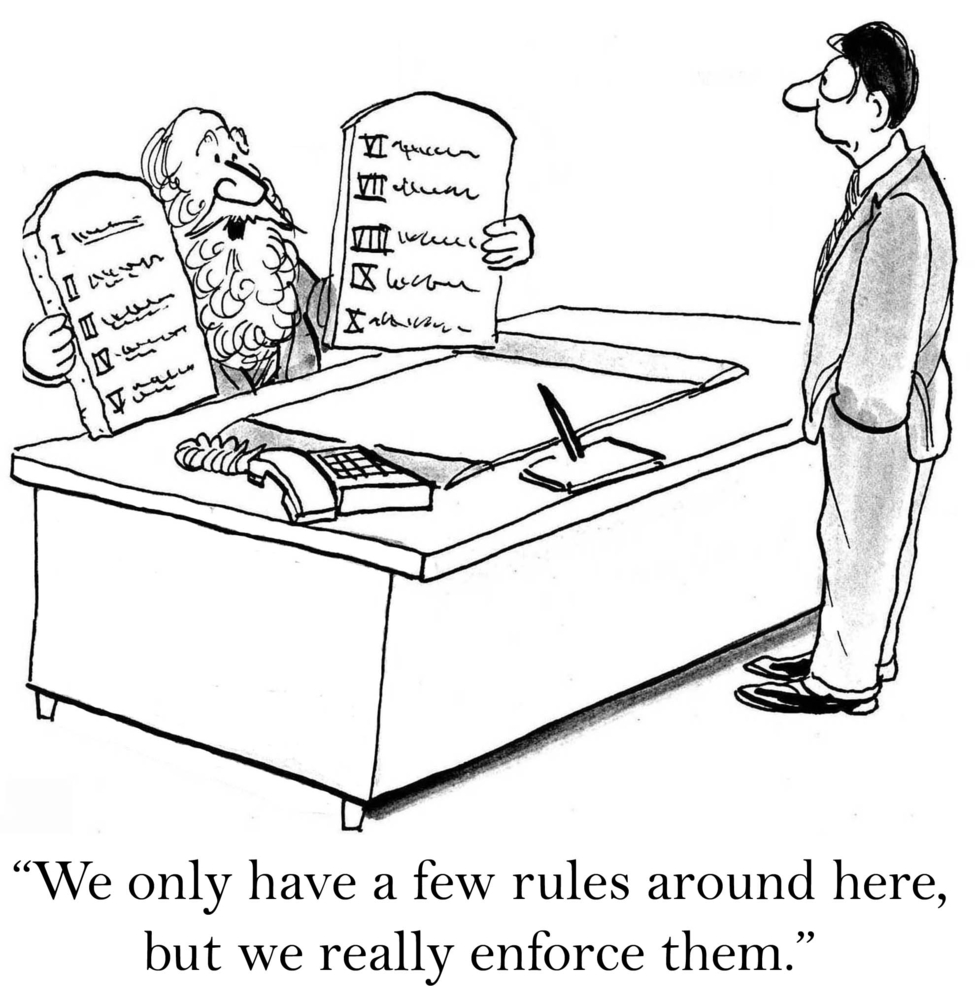
What Do You Think – Can Rules Change Corporate Culture?
If only corporate culture change could be accomplished through simply establishing a “few rules.” Unfortunately, effecting real organizational culture change, just as succeeding at real behavior change, is not easy. It takes far more than dictates from on high.
What We Can Learn From France about Rules and Culture
The recent attempt in France to cut down the time employees are spending (or wasting) on reviewing and answering emails provides an interesting example. The French enacted a new law on January first of this year that put companies with more than 50 employees in charge of setting limits on when their workers could send and receive emails. The intent was to free the workforce from carrying their work home, to protect their private time and to avoid upsetting their work-life balance.
Are Emails Really the Root Cause?
To be sure, emails can be an unnecessary burden and time drain. Bain & Company reported that managers, for instance, spend an average of 8 hours per week (one full day!) on email and that one-half of that time is spent reading mail that should not have been sent to them in the first place or responding to mail that they shouldn’t have answered. So changing the email culture would save time and raise productivity. But can it be done the way the French are trying to do it?
Our Point of View On Culture Change and Rules
Corporate culture—the way things get done in an organization day-to-day—cannot be changed except over time, with an agreed-upon purpose and in alignment with the business strategy. Even then, it should not be addressed in the same way at every organization. We think you have to take into account your own workplace culture and how the problem of email overload could be most effectively handled in your particular situation and with respect to your specific talent management strategies.
Can Rules Change Corporate Culture? Three Steps to Take
Can You Treat Effective Emails Like Effective Meetings?
So with that in mind, perhaps you can design more effective emails according to the model you use for effective meetings. A clear agenda is similar to a clear and straightforward subject line. The attendees should have a need to be at the meeting just as the email recipients should have a real need to receive the news in the email.
Just as there is a wrap-up of clear action steps and responsibilities at the end of a meeting, so should there be a clear call to action at the end of the email.
The Role of Leaders to Change Culture
Once your email reduction plan is accepted and understood, the changes should be modeled by leaders; and the desired behaviors should be encouraged and recognized. Only then can the email culture change begin.
So What Happened in France?
It’s too early to tell. But our prediction is that just changing the timing of email will not result in the desired change of less work or greater employee satisfaction. It is likely that time spent on emails will only shift from “off-hours” to the actual work day and the other work will take place in those rescued “off-hours.”
You Need More than Good Intentions to Change Culture
The intention—to preserve a better work-life balance—was obscured by the way the legislators went about changing the workplace culture. It was a “one-size-fits-all” approach that missed the real goal.
The Bottom Line
Can rules change corporate culture? Not by themselves. You, however, have a chance to do it better. Take into account what works best at your unique company and make sure your plan for change aligns with a clear business strategy, your desired corporate culture and with the top talent you have worked so hard to attract, engage and retain.
To learn more about if rules change corporate culture, download 5 Science-Backed Lenses of Change Leadership
Explore real world results for clients like you striving to create higher performance